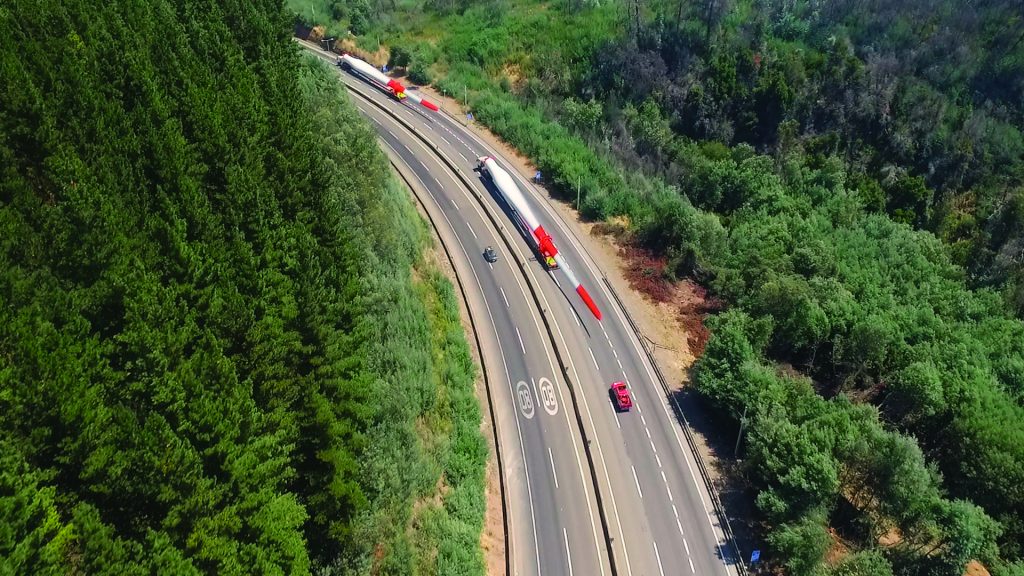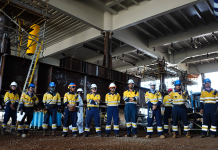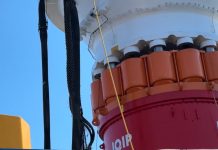Chile’s Energy Route 2018-2022 is an initiative that hopes to bring together stakeholders in the renewable industry. Following its announcement, Spain’s Acciona was contracted to build four new renewable energy projects in Chile, adding 400 MW across two solar farms and two wind farms.
One of these is the San Gabriel wind farm, in the municipality of Renaico in the region of La Araucanía. Once completed, San Gabriel will be home to 61 wind turbines, adding 183 MW of renewable energy to the grid, with an investment of $300 million.
To transport the components, the contractor turned to ALE. Each wind turbine was made of concrete segments, as well as a nacelle, which houses the generator; a hub, to which the blades are attached; and the blades themselves. In total, there were 976 components.
ALE was tasked with unloading the components from ships arriving into Lirquén Port near the city of Concepcion. After receiving the components, they had to be transported about 230 kilometers near to the town of Renaico.
The challenge ALE faced was navigating the route from the port to the wind-farm site. The sheer size, weight, and volume of components meant that the route had to be carefully surveyed and planned.

Each nacelle weighed 105 metric tons, and each blade weighed 18 metric tons with a length of 65 meters, making the components difficult to transport on conventional trailers and under standard bridge heights.
To solve this problem, ALE surveyed the route using manual measurements as well as topographical and software simulations using AUTOCAD and AUTOTURN to evaluate tight bends.
To transport the blades, ALE worked with local authorities to obtain the relevant permits but also to make adjustments to the route, such as cutting into part of a mountain to achieve the necessary turn radius and also temporarily shutting down a hydro-power station to relocate the transmission line. These subcontracting works were coordinated by ALE in order to make all the upgrades to the route in the time-scale necessary to achieve the schedule of the project.
The equipment ALE used ranged from 24 axle lines, three blade trailers, two low boys, and five expandable trailers to accommodate the tower sections.
ALE was able to turn around the project within three months of being appointed. This was made possible thanks to ALE’s experience of delivering parts to the most remote locations around the world. Not only does this improve the cost per kWh of transporting components, it is vital to getting renewable energy projects up and running.
More info www.ale-heavylift.com



























